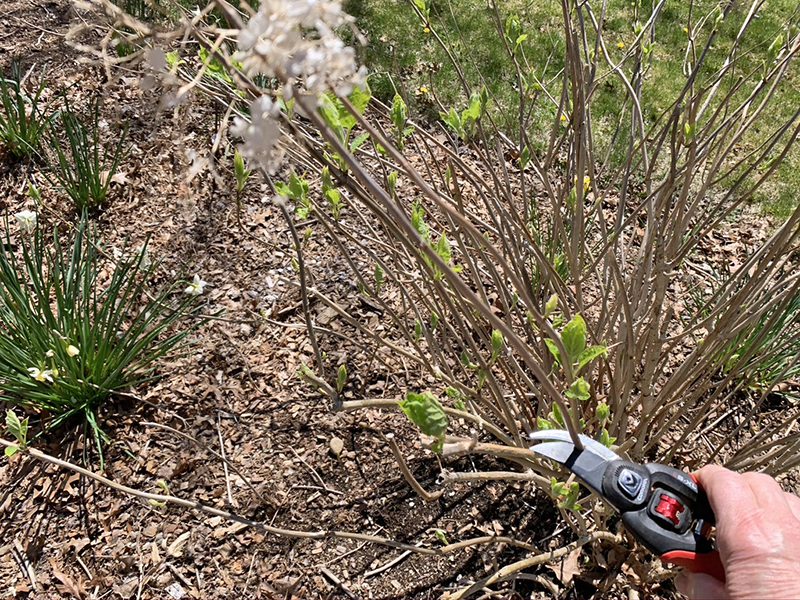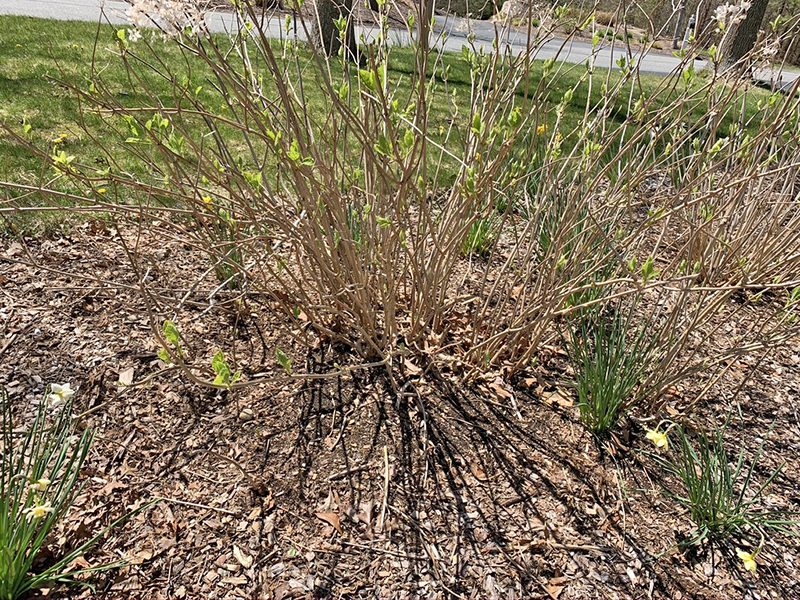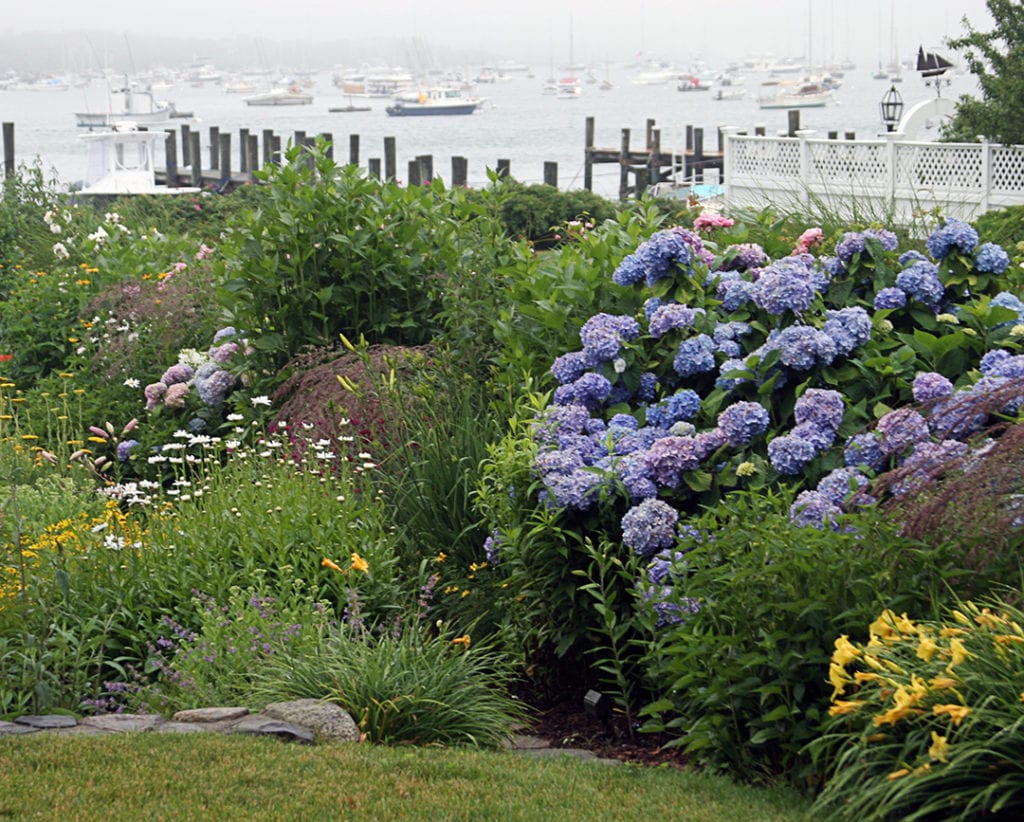Hydrangea Care in May
Hydrangea Care in May
Knock on wood and cross your fingers, but it looks like a good flowering year for our mophead and lacecap hydrangeas! Because we had a fairly mild winter, most of the flower buds that these shrubs formed in the late summer of 2019 lived through the cold season. All of those small green leaves you see forming on your hydrangea canes now should develop into foliage and flowers.
Here are the things you can be doing for your hydrangeas now, plus some tips on buying new varieties to add to your landscape.
- If you haven’t pruned your mophead or lacecaps (Hydrangea macrophylla and Hydrangea serrata) yet, you can do so now. We often have to wait until late May to see what’s living and what’s dead, but this year the plants are leafing out early. So get out with this in mind: don’t cut off any canes with green leaves or buds on them. It’s impossible to make them shorter since they will replace their height by mid-July. (All those green new shoots you see at the base of the plant will grow to be the same height.) Just cut away tips with no live buds, or canes that are bare with no leaves at all.
- If your hydrangea is too large for the location, move it now. Early May is a good time to do this. You can split plants now too, if you want to make more.
- Fertilize with Holly-tone for blue hydrangeas, but use Flower-tone for pink or white varieties.
- Top dress around older plants with one bag of compost per shrub, spreading it out to just beyond the drip-line.
- Top the compost with an inch of mulch. This helps keep weeds down and the moisture in the soil under your plants.


Buying New Hydrangeas
Our nursery has just begun to get in shipments of hydrangeas. The majority of these will arrive later in May and we’ll continue to get them in through the summer. So don’t feel pressured about finding the right plants immediately, because there is plenty of time for shopping and planting these Cape Cod favorites.
- Look for hydrangeas that will be the height you are looking for, since it’s impossible to have a good amount of flowers and prune them shorter. Trying to control a shrub’s size by pruning is a make-work project for the homeowner, and for the mophead and lacecap varieties it doesn’t work anyway.
- If the area where you want to plant is in full sun, good choices would be any of the panicle types (Hydrangea paniculata) that have white flowers from late July into fall, and often turn pink as they age. When planted in full sun the blue hydrangea flowers brown out by mid-August.
- Mophead and lacecap hydrangeas do best when planted in locations that either get morning sun or late-afternoon sun, but are shaded between about 11 AM and 3 PM.
- Various smooth hydrangeas (Hydrangea arborescens) such as Annabelle do well in sun or shade, but the pink varieties grow best when in full to half-day sunshine.


Subscribe To Our Newsletter
Sign up for our weekly email about sales and events.
